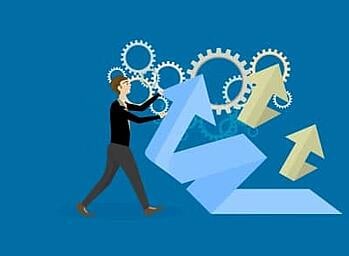How to Reach Your Business Goals with Your ERP Implementation
 There are probably more articles on executing a successful ERP implementation than actual successful implementations. This is of course said in jest; however, the point is that there are many references on this topic. One of the main tenets of successful ERP implementations is proper goal setting and measurement. As the author Lewis Carol said “If you don’t know where you’re going, any road will take you there.”
There are probably more articles on executing a successful ERP implementation than actual successful implementations. This is of course said in jest; however, the point is that there are many references on this topic. One of the main tenets of successful ERP implementations is proper goal setting and measurement. As the author Lewis Carol said “If you don’t know where you’re going, any road will take you there.”
Why Do the ERP Implementation?
At the onset of most ERP implementations the question should be asked, "Why are we doing this?" An ERP implementation requires hard and smart work. All of that work can be wasted if the goal is not established and understood. As any seasoned Project Manager can tell you, a project without a goal is a meandering, frustrating endeavor and will be hard-pressed to create the “job well done” feeling in the end. ERP projects without goals usually end sometime when the software is turned on, the money runs out and what can be launched is launched, or in utter failure, with no system Go Live.
Some Typical Goals
Let’s explore some typical goals or reasons for executing an ERP system implementation:
- The current system is antiquated. This can mean it will no longer be supported by the software supplier, it no longer supports key business processes or is just too plain hard to use for the vintage of the system.
- The new system is mandated by company leadership, parent ownership or another entity that may have perfectly good reasons for the implementation, but has articulated them as simply “thou must do this”.
- A savings in cost is obvious. Maintenance too high, etc.
- A reduction in inventory is needed.
- To meet a new business need (example: customer is showing how they use EDI, and the current system does not support EDI).
- The company has grown out of the current software package (example the company now has multiple plants or operates in multiple countries or has added new business processes).
Measure the Current Baseline
Once the exact goal has been established, assure it can be measured and a baseline can be established. From the list above, reasons 1 and 2 can be easily measured with a completion, but this should not be considered the measured goal. Push back on yourself and the organization before accepting such a black and white goal. For numbers 3 and 4, a firm baseline has to be established along with an agreed upon measurement. If you are going to reduce your fixed cost overhead with a more efficient system, then measure the current fixed cost involved in ERP use and make that the baseline. Do not accept a “certainly it will be easier” type goal. Number 5 from the above list can be a baseline measured in terms of lost business or lost business growth. Number 6 can be measured by what cannot currently be done.
Execute the Plan. Walk the Talk.
The measurement should be built into the ERP project plan. Assure the specific goal is present in the plan. If the goal is to be able to conduct EDI with customers or suppliers, then assure EDI is prominent in the design, build and deployment of the system. If the amount of time to quote a customer is to be reduced (goal = less overhead cost/quote), then measure that time continually during testing. Teams respond better to constant feedback. Put a measurement in the project status report such as time to complete the quote. When the team beats the current baseline time be sure to acknowledge this point and reward the team with even a small milestone benefit such as a free lunch.
Measure the Output of the ERP
When the project is complete, it should include a measurement against the stated goal. This will allow all persons in the company to see the result. Post or otherwise, communicate the results. Continue to measure the outcome after the initial measurement. This will establish two important outcomes from your ERP project. The first being that the successful results were held and that continuous improvement is established. You will run your company on this ERP system for 10-15 years. Do not allow improvement to be one-time phenomena.
Continue to Improve and Hold the Gains.
As Lord Kelvin said, "If you cannot measure it, you cannot improve it." At Meaden and Moore, we pride ourselves in successful measureable improvement.
Things that are measured tend to be improved.
For more information about ERP systems, check out our ERP Blog Category page.
This blog was co-authored by Marty Roberts:
Marty Roberts has worked for 25 years in various industries and market sectors including repetitive machining, process manufacturing, discreet manufacturing, engineering systems to order as well as both front end and back end retail management. As a software and business consultant Marty has helped many companies transform their businesses to meet current and future goals and requirements.
Image courtesy of mapichai at FreeDigitalPhotos.net
Scott Holter is the Director of Meaden & Moore’s Business Solutions Group. He has spent 20 plus years in manufacturing and technology consulting.








